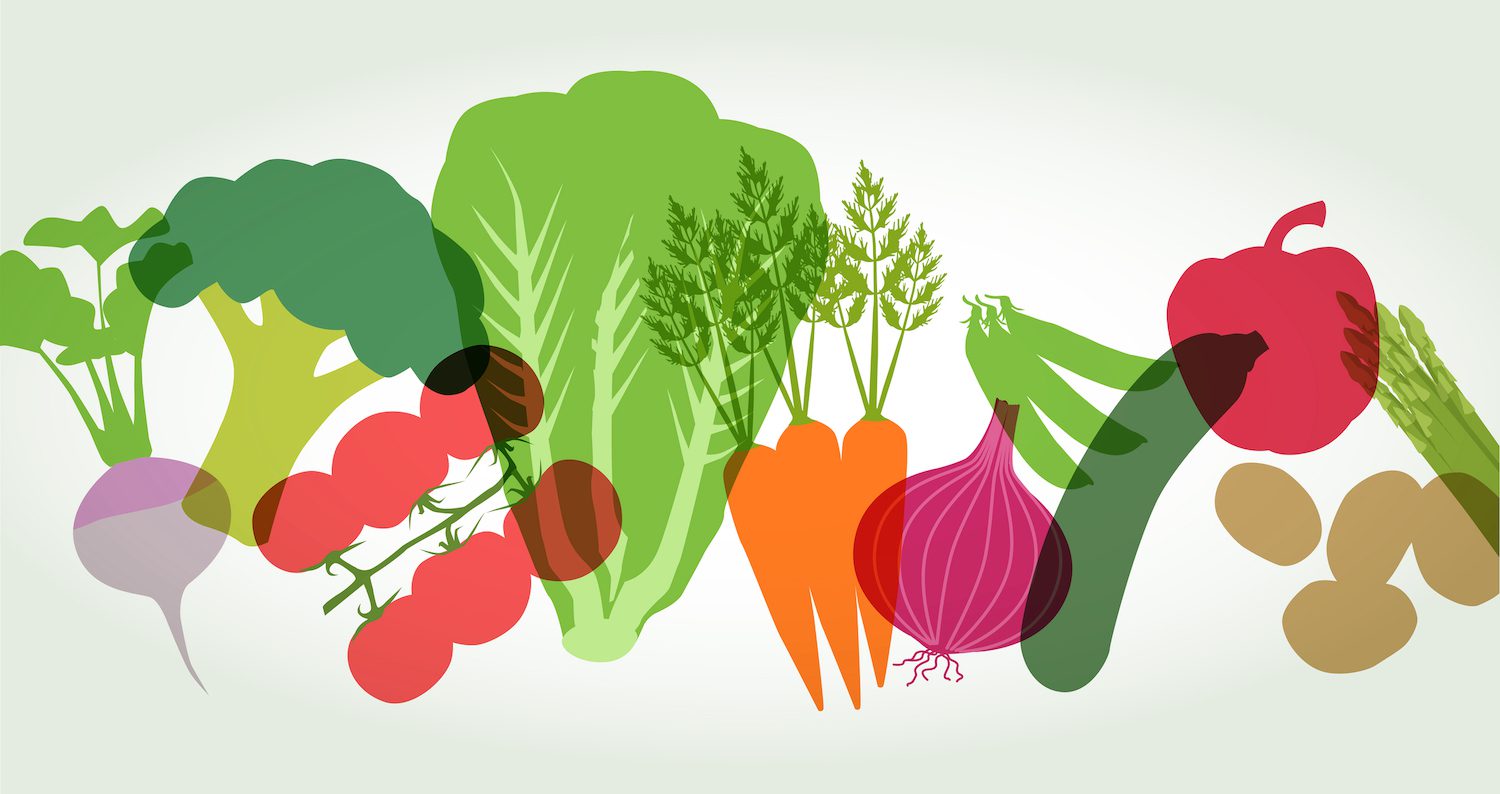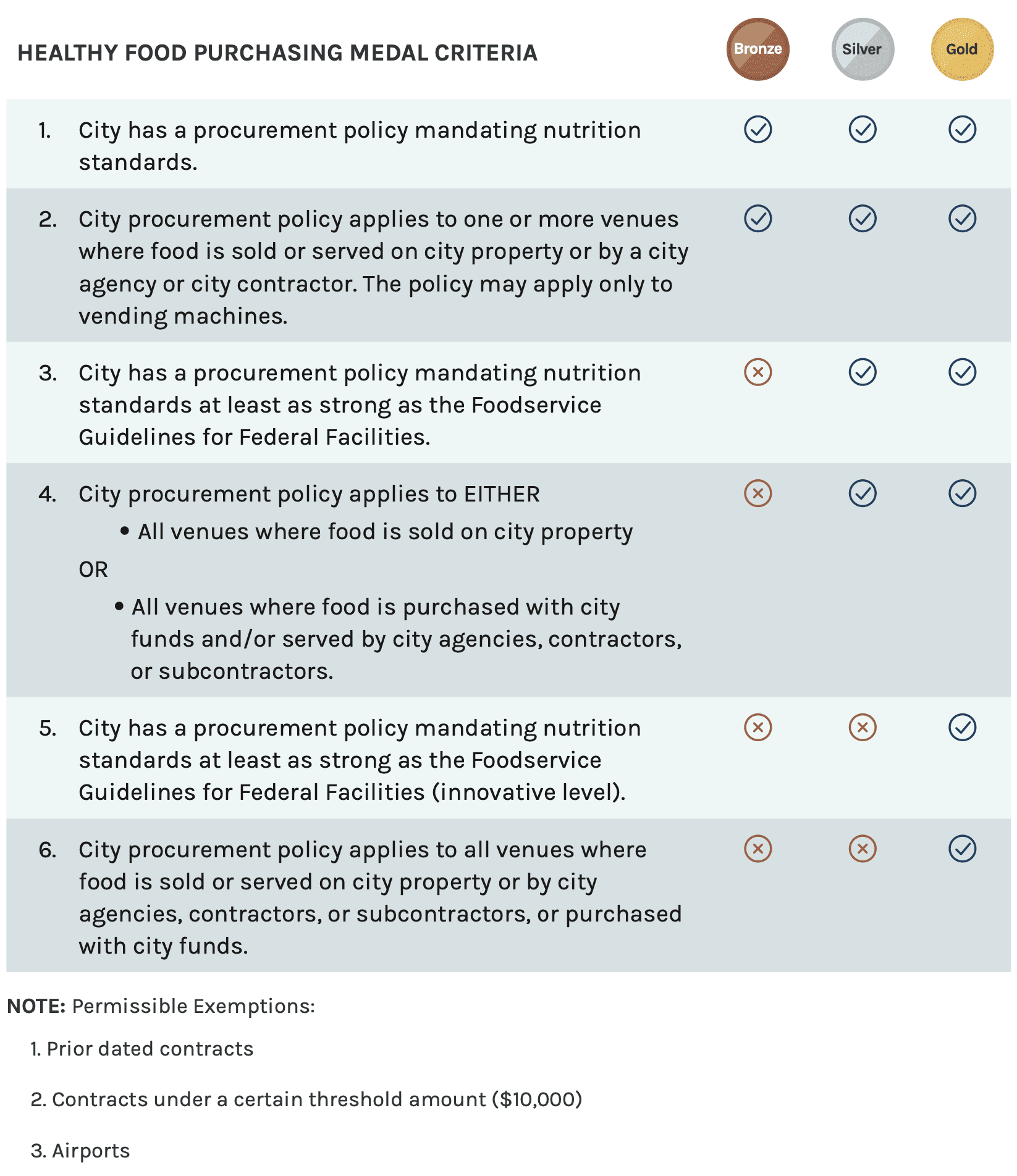This is the eighth blog in our monthly series exploring CityHealth’s 2.0 policy package. Sign up for our newsletter to learn about new policy solutions, tools, and resources.
It’s summer, which means residents are flocking to city-owned parks, pools, and recreation centers to beat the heat and relax. Children are attending municipal summer camps and activity programs, while millions of adults work in local government offices. If you want a snack or meal while you’re in these public places, you might see what a vending machine or cafeteria has to offer. When cities have healthy food available, we all have more opportunity to choose what’s best for our bodies. Cities can lead by example by prioritizing health in their food purchases so that everyone has greater access to healthy choices where we work, play, and learn.
This month, we’re continuing our blog series exploring CityHealth’s 2.0 policy package by exploring Healthy Food Purchasing — an evidence-based policy solution that promotes the health and well-being of people by expanding access to healthy choices on public property. From recreation centers to government offices, these policies meet residents where they are and can be used to improve the nutritional quality of meals and snacks in institutional settings.
The Challenge: Our Food Environment Does Not Support Healthy Diets
The quality of our diets has a meaningful impact on our life-long health outcomes. Healthy eating habits — such as eating a variety of foods from all food groups, and limiting our intake of saturated and trans fats, added sugars, and sodium — can help reduce the risk of unhealthy weight gain and diet-related diseases and increase life expectancy.
The diet recommended by health authorities is out of reach for many people in United States. The causes of poor diet quality are complex and multi-factorial, but one component is the food environment. Often, healthy food and beverage options are lacking in the places we live, work, play, and learn. This is especially problematic for people that depend on a single institution for nutrition on weekly or daily basis.

Healthy Food Purchasing Policies: Increasing Healthy Food Access in Public Facilities
Local governments play a critical role in ensuring that residents avoid negative food-based health outcomes and their associated health care costs. Healthy Food Purchasing policies are a particularly good tool to improve the food environment and influence the supply chain because local governments are often among the largest employers and food purchasers in a community.
When cities adopt Healthy Food Purchasing policies, they can expand access to healthful food options in public places where people spend significant portions of their time, like recreation centers, municipal offices, senior centers, daycare facilities, and more. These policies ensure that the food that is offered in public spaces is healthy for residents’ minds and bodies by setting nutrition criteria for products served and sold in these locations. These policies can advance health equity by prioritizing settings that primarily serve communities at higher risk of diet-related disease, including correctional facilities and feeding programs for people with low incomes. Healthy food purchasing is also a powerful lever for municipalities to ensure a healthy environment for their workforce.

There is ample evidence of the effectiveness of Healthy Food Purchasing policies in terms of increasing availability and consumption of healthier foods and beverages. If implemented widely, these policies could save millions of dollars in preventable health care costs. They may pay off in more ways than one — one government cafeteria saw increased sales after implementing healthy food service guidelines
Local governments can also leverage their food purchasing power to shift the food supply to be healthier, more sustainable, and more equitable. In Philadelphia, a framework allows the city to prioritize purchasing high-quality, nutritious food that improves outcomes for producers, consumers, and the environment. The city prioritizes purchasing meals and snacks that support local, minority- and women-owned businesses that can increase residents’ access to safe, healthful food. Cities like New York City and Los Angeles have also instituted Healthy Food Purchasing policies that promote equitable and sustainable food procurement, and are supported by national partner organizations such as the Center for Good Food Purchasing. Strong, comprehensive food procurement policies like these ensure that taxpayer dollars are spent in accordance with public health and community values.
Earning CityHealth Gold
Starting in 2022, CityHealth will assess the nation’s 75 largest cities on their Healthy Food Purchasing policies. Cities can earn a gold, silver, or bronze medal based on how the city performs on six key criteria:

CityHealth is a resource for city leaders, policymakers, and advocates pursuing policy change that can help all residents live healthy, full lives. Have a question about Healthy Food Purchasing or any of our other policies? Please feel free to send us an email, and join us to learn more about the tools, research, and technical assistance opportunities from CityHealth and our partners.


 Katrina Forrest, J.D., and Catherine Patterson, MPP, are CityHealth’s Co-Executive Directors.
Katrina Forrest, J.D., and Catherine Patterson, MPP, are CityHealth’s Co-Executive Directors. 

